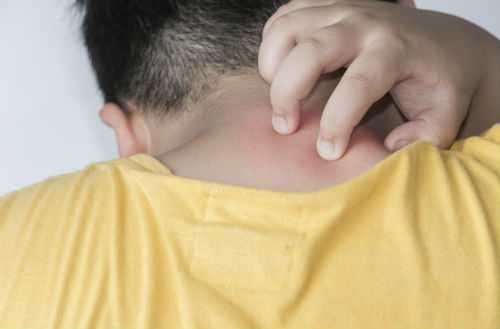Key Findings: Prevalence of self-injurious behaviors among children with autism spectrum disorder

The Journal of Autism and Developmental Disorders has published a new study showing that nearly 28% of 8-year-old children with autism spectrum disorder (ASD) behave in ways that can lead to self-injury. These findings suggest that self-injurious behaviors, such as head banging, arm biting, and skin scratching, are common among children with ASD. More research is needed to determine factors that may cause self-injurious behaviors. Read the scientific summary of this paper.
What Did We Already Know?
ASD is a developmental disorder that affects how a child behaves, communicates, and interacts with other people. In addition to the main symptoms of ASD, children with ASD may also behave in ways that lead to self-injury. Common types of self-injurious behaviors are head banging, hair pulling, arm biting, eye poking, and skin scratching. Previous studies have looked at how common self-injurious behaviors are among children with developmental disabilities, but information specific to children with ASD from large studies is lacking.
What Does this Study Add?
This is the first study in the United States to examine how common self-injurious behaviors are among children with ASD in a large and diverse sample of children in multiple areas of the country. It is also the first study to examine self-injurious behaviors among children who had symptoms consistent with ASD but did not have a previous diagnosis of ASD from a community provider.
What Were the Study’s Main Findings?
- Almost 28% of 8-year-old children with ASD had evidence of self-injurious behaviors documented in their health and/or education records.
- Compared to children with ASD who did not have self-injurious behaviors, those with self-injurious behaviors were more likely to:
- Have a previous, documented diagnosis of ASD
- Have lost acquired skills in the first few years of life (e.g., talking, smiling when interacting with others, pointing to objects)
- Have problems with learning
- Live in a low-income area
About this Study
This study examined data from the health and/or education records of 8-year-old children identified by the Autism and Developmental Disabilities Monitoring (ADDM) Network during the 2000, 2006, and 2008 tracking years. Clinicians from the ADDM Network reviewed the children’s records to look for any behaviors that were considered self-injurious behaviors. A total of 8,065 children who were identified by the ADDM Network as having ASD were included in the study.
More Information
Learn more about the ADDM Network.
Autism Speaks’ Challenging Behaviors Tool-Kit for Families and Caregivers
Reference
G. N. Soke, S.A. Rosenberg, R.F. Hamman, T. Fingerlin, C. Robinson, L. Carpenter4,
E. Giarelli, L-C. Lee, L. D. Wiggins, M.S. Durkin, C. DiGuiseppi. Prevalence of Self-injurious Behaviors among Children with Autism Spectrum Disorder—A Population-Based Study. Journal of Autism and Developmental Disorders. 2016.
E-mail Your Friends
"Children with autism spectrum disorder are not being diagnosed as early as they could be. Learn the signs of autism and get help if you’re concerned."
Share on Facebook

“Many children with autism spectrum disorder (ASD) are not being identified as early as they could be. Early identification is the most powerful tool we have right now to make a difference in the lives of children with ASD.”
Share on Twitter
“Too many children w/ autism are not being identified as early as they could be. Earlier is better. #ActEarly”
- Page last reviewed: October 21, 2016
- Page last updated: October 21, 2016
- Content source:


 ShareCompartir
ShareCompartir